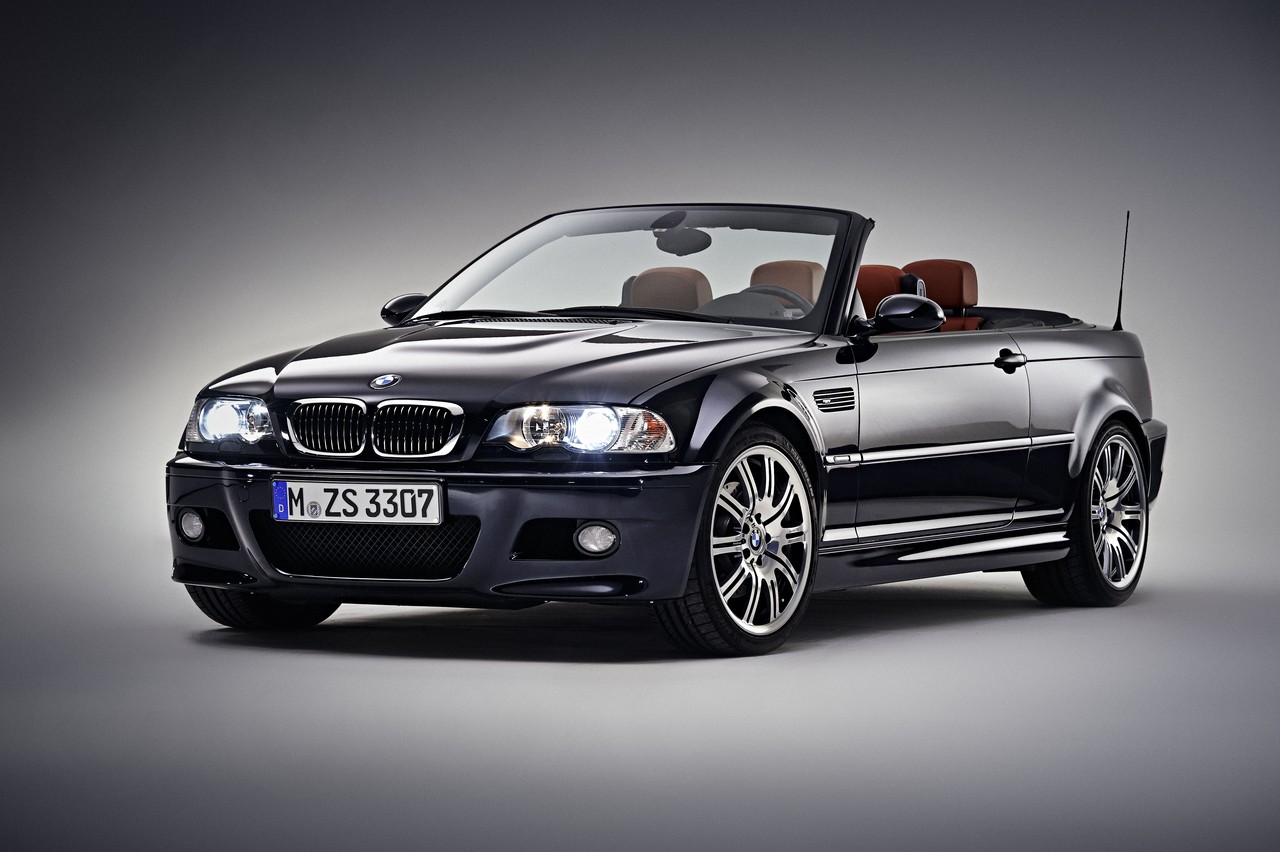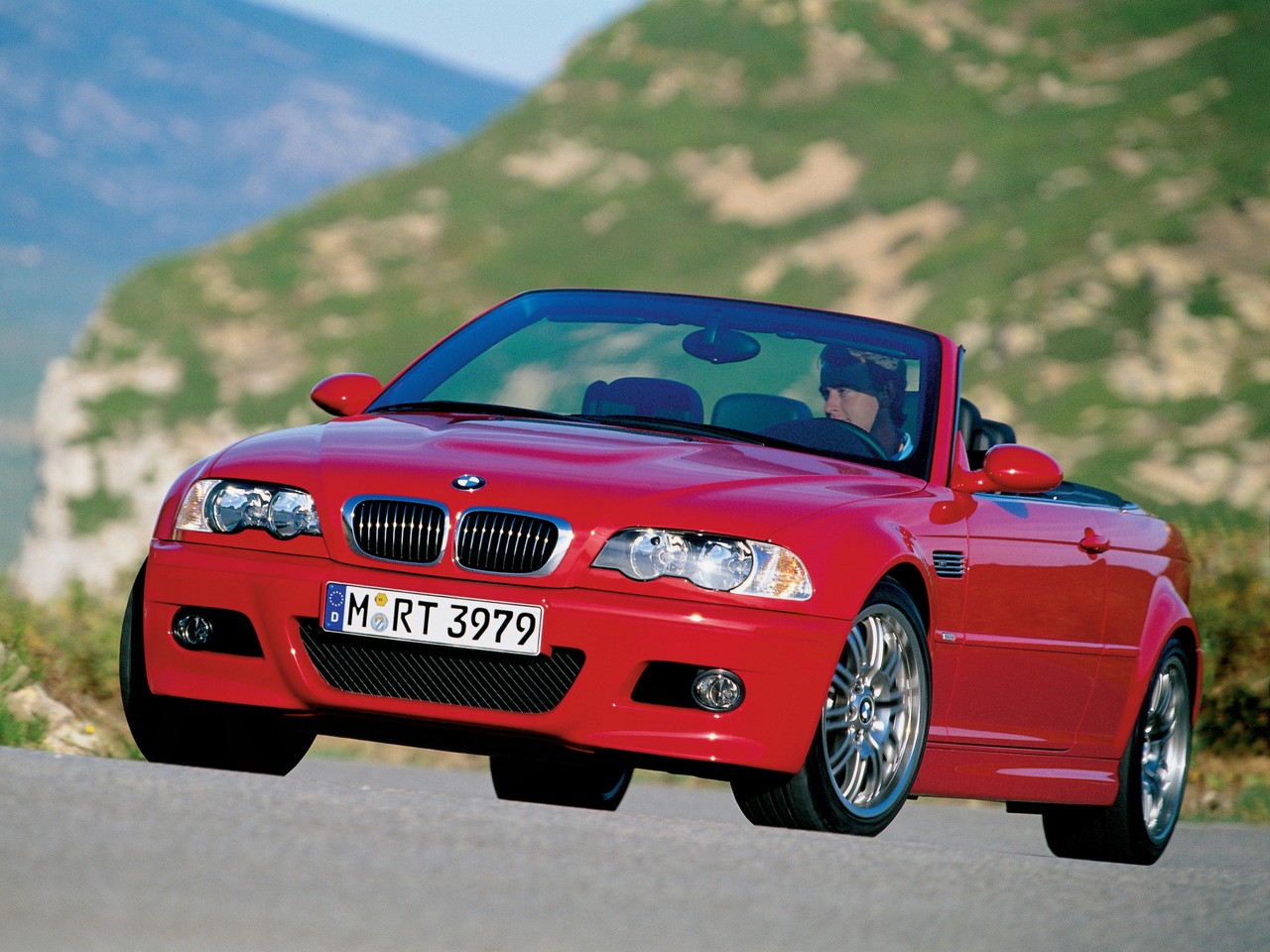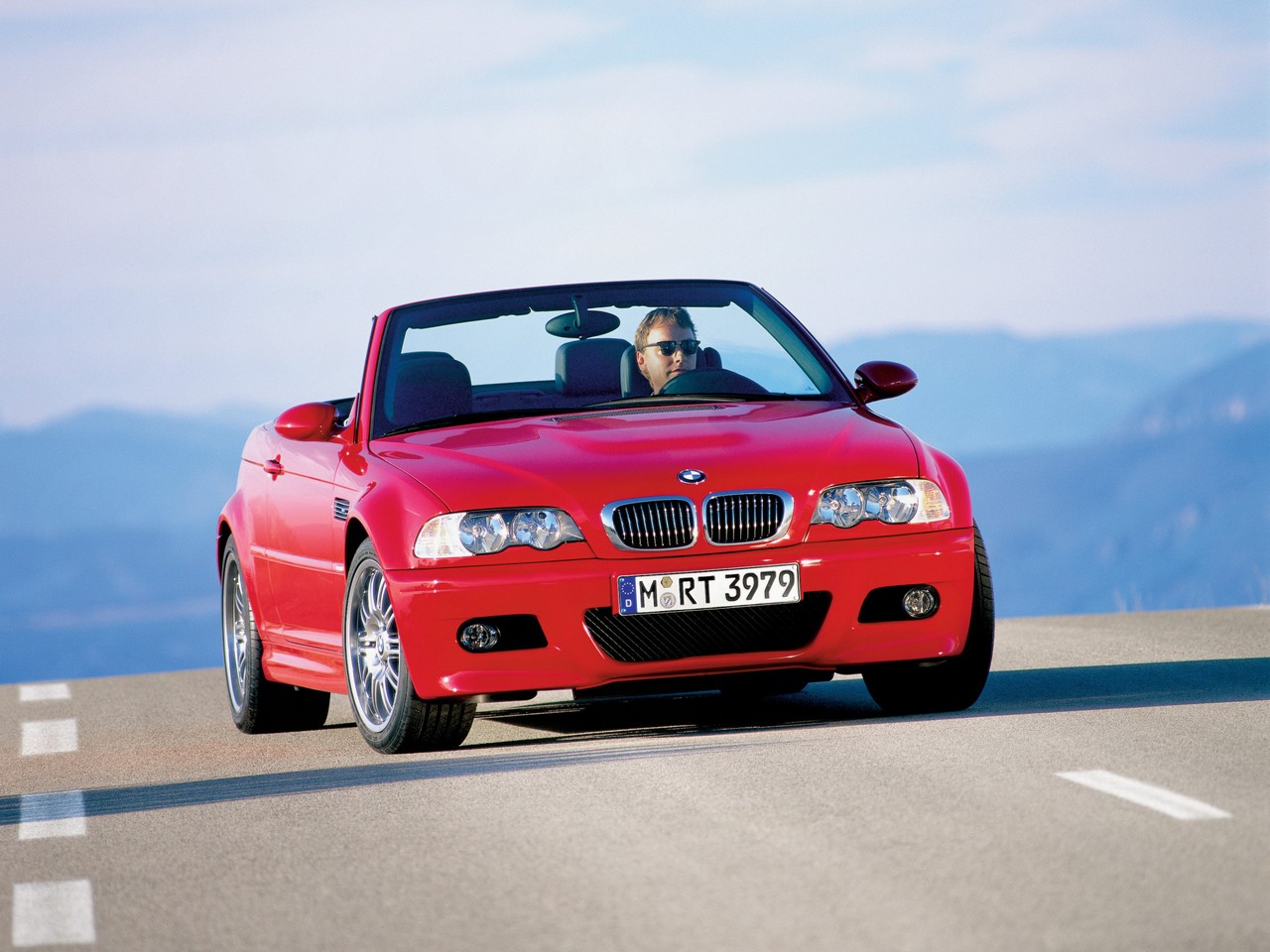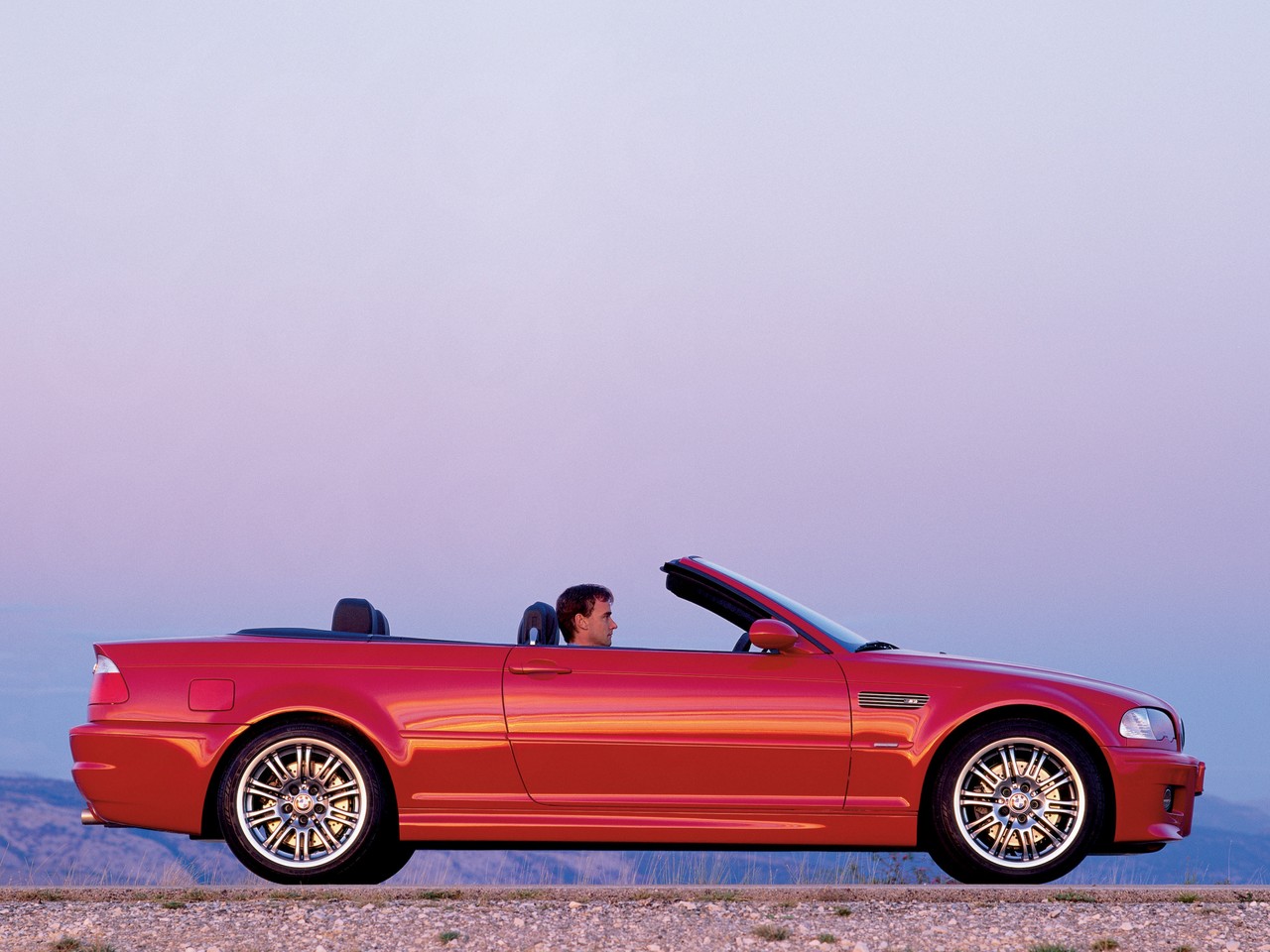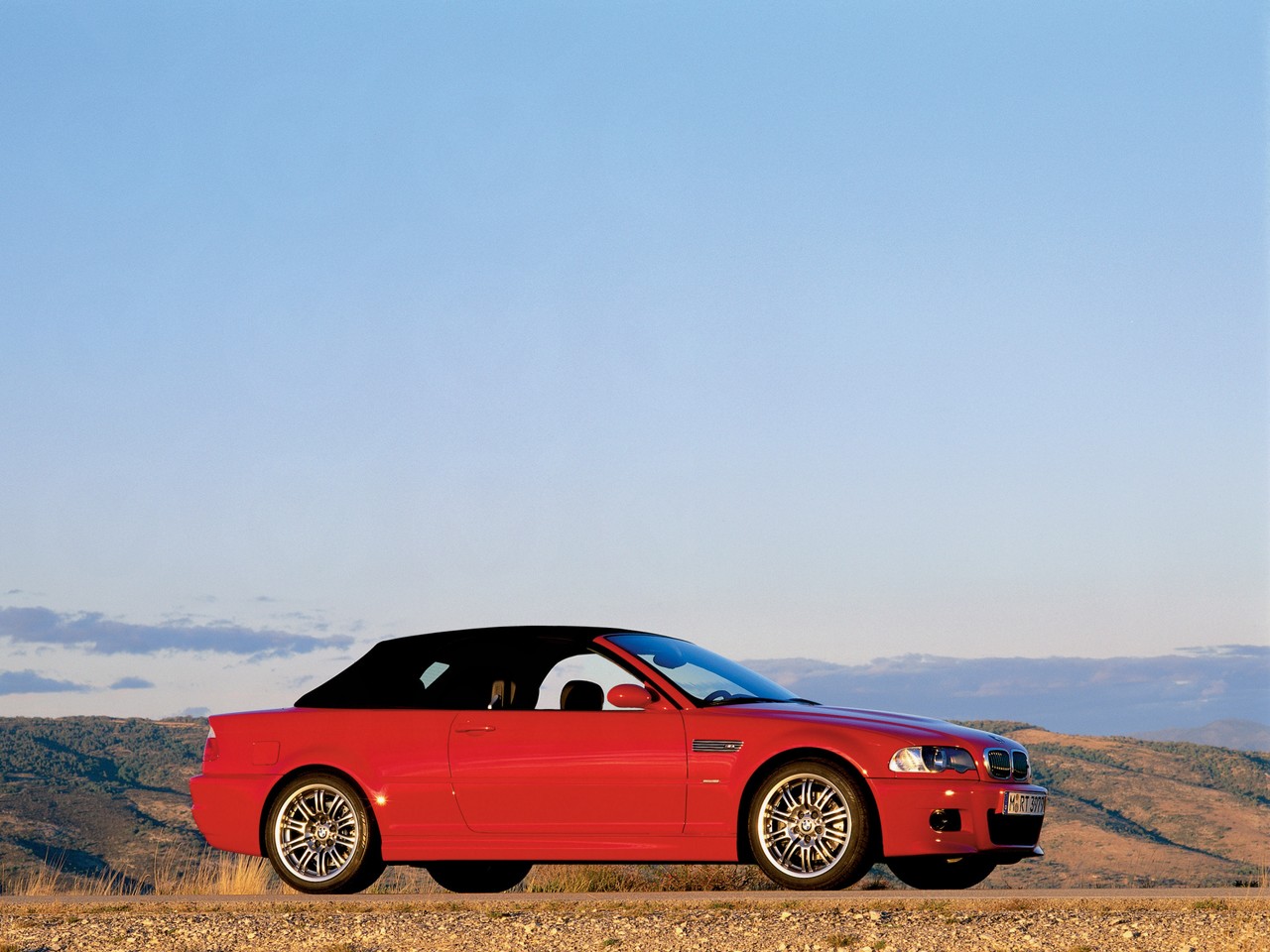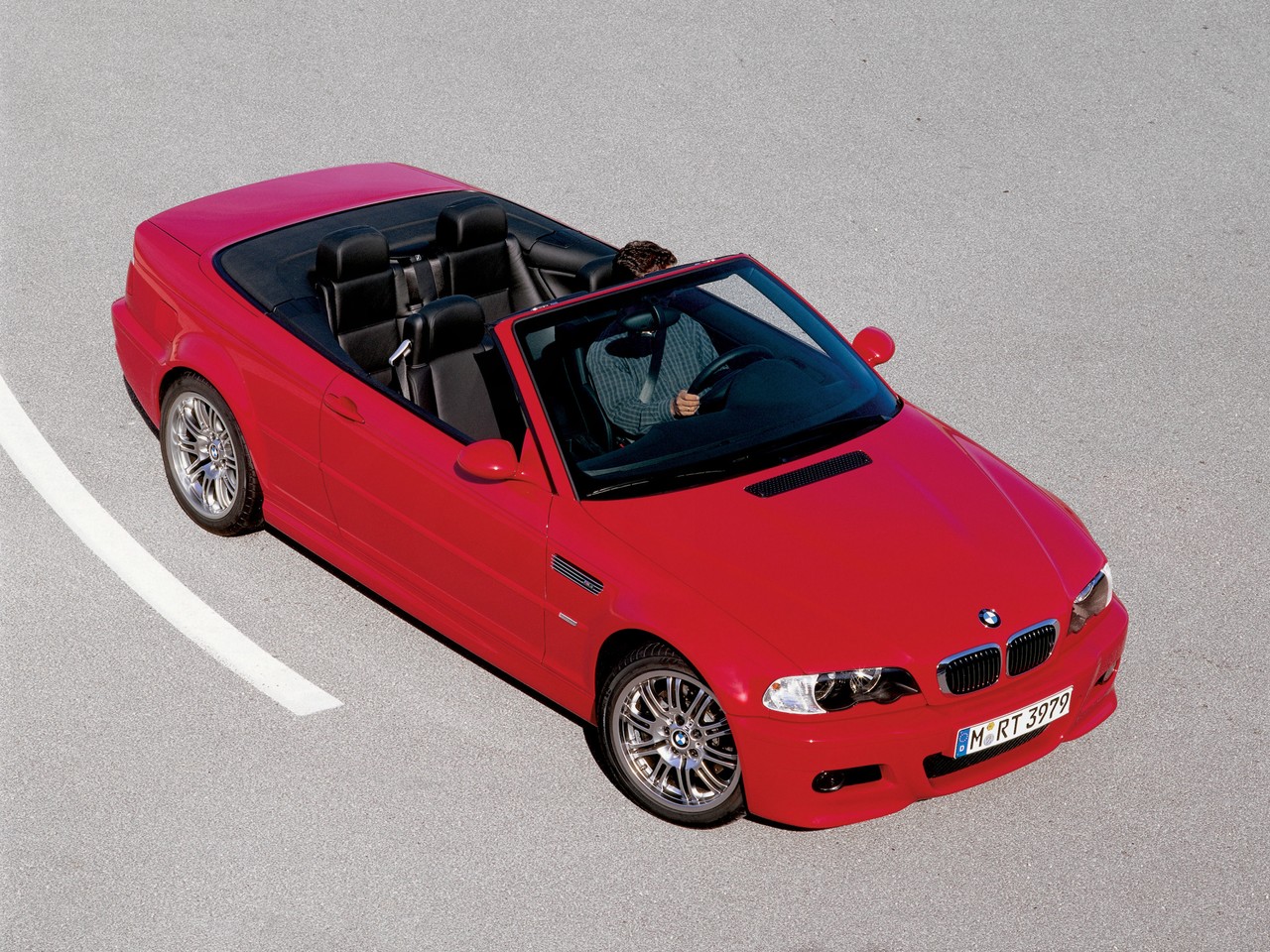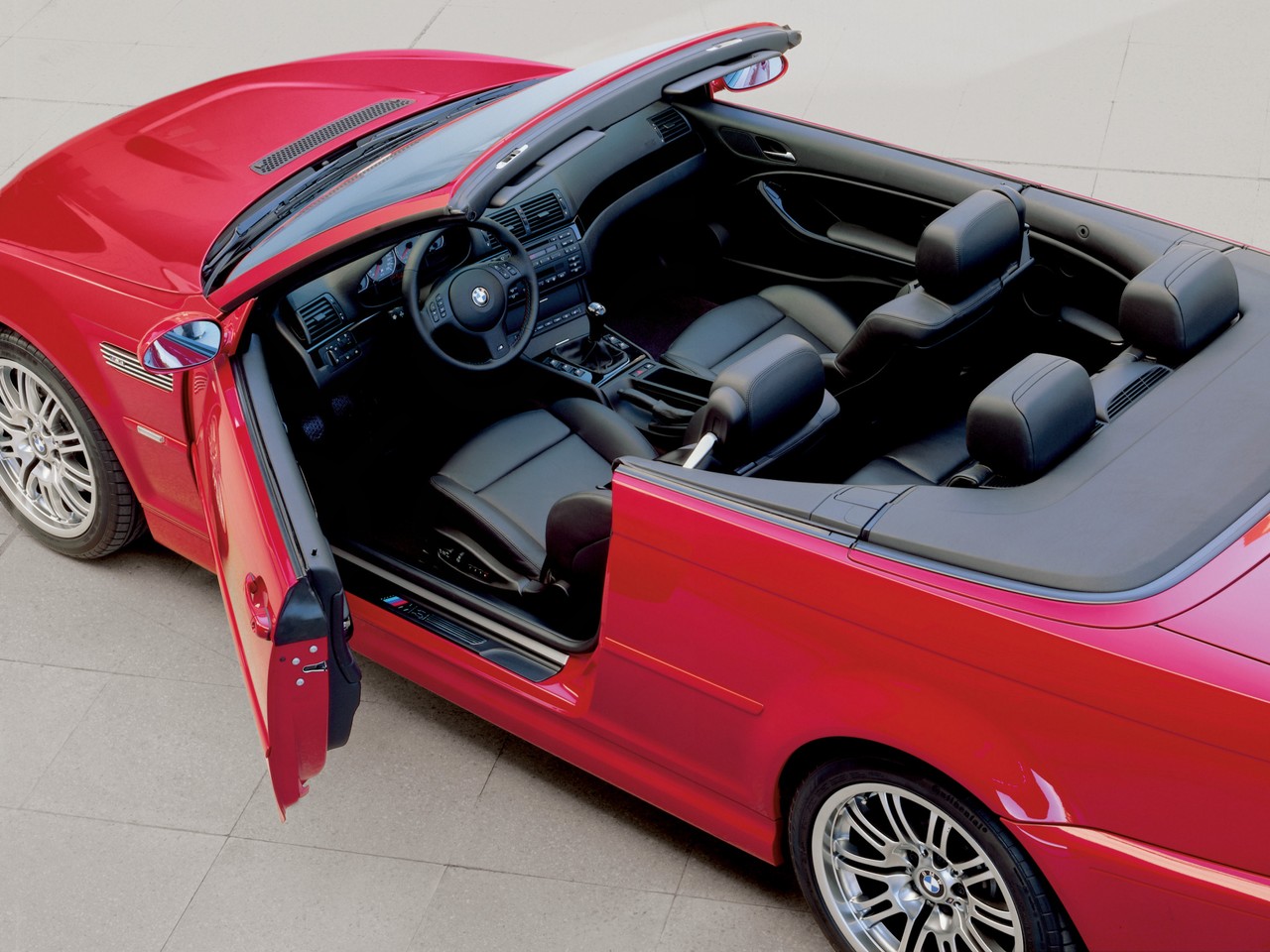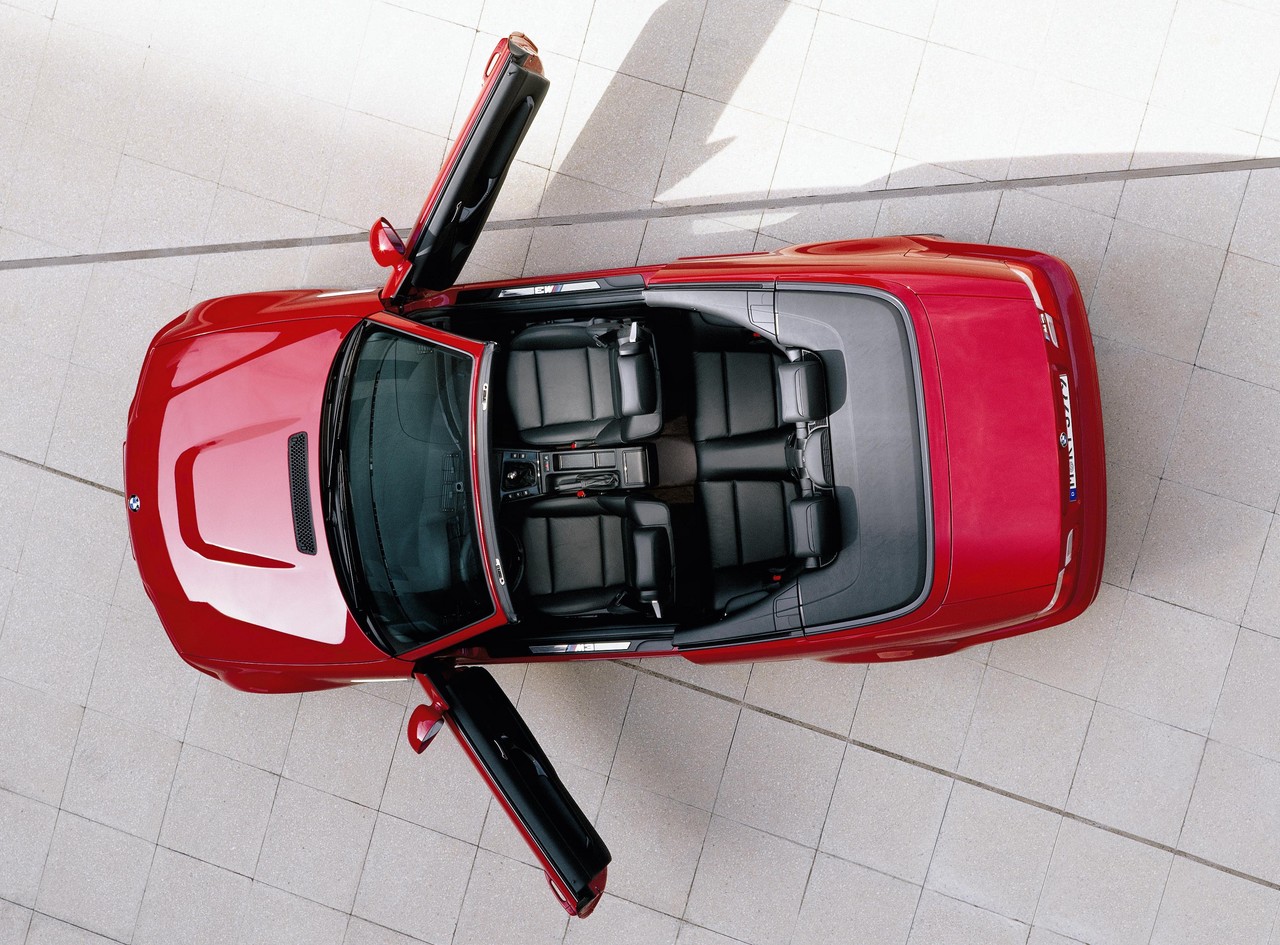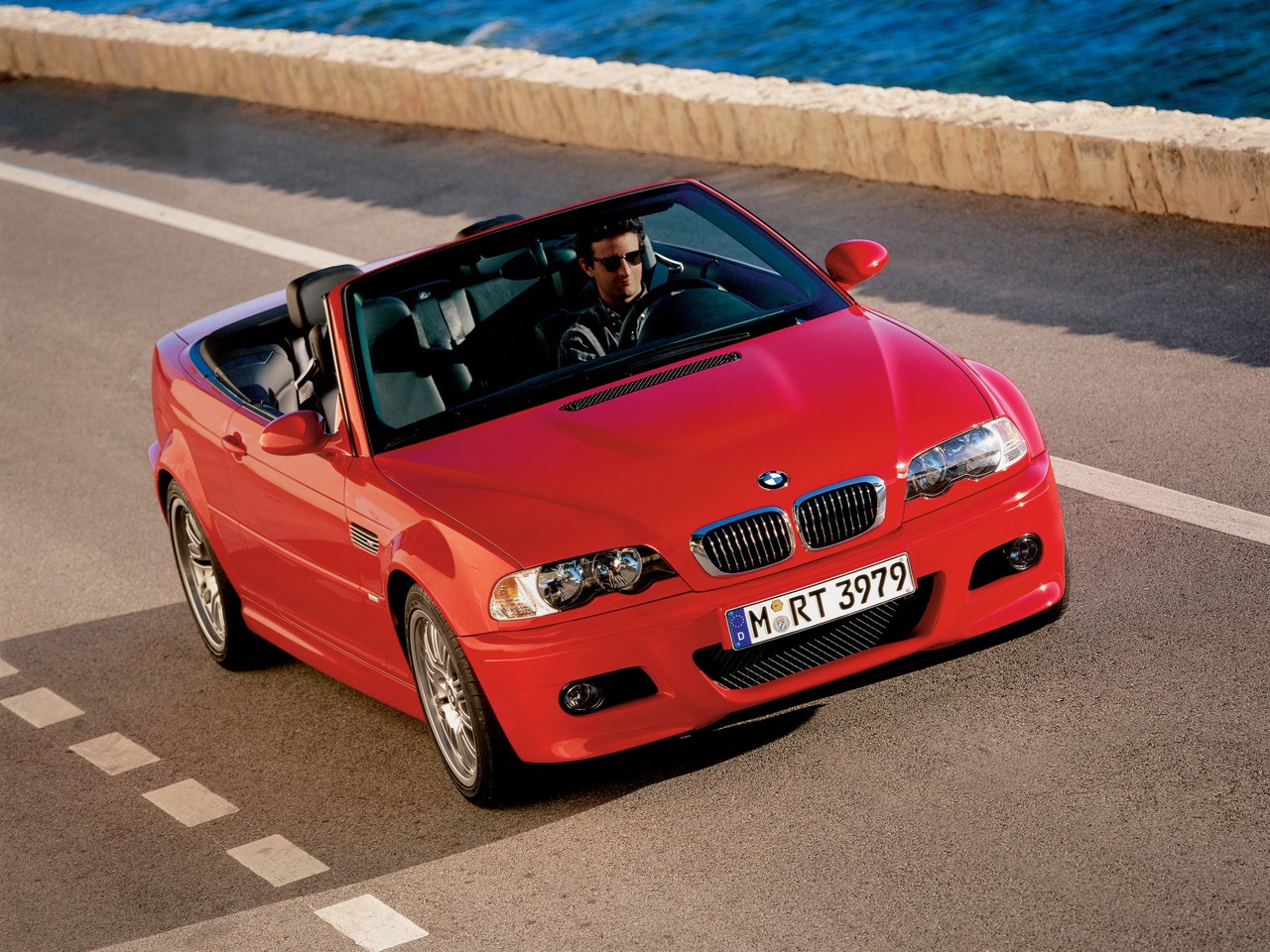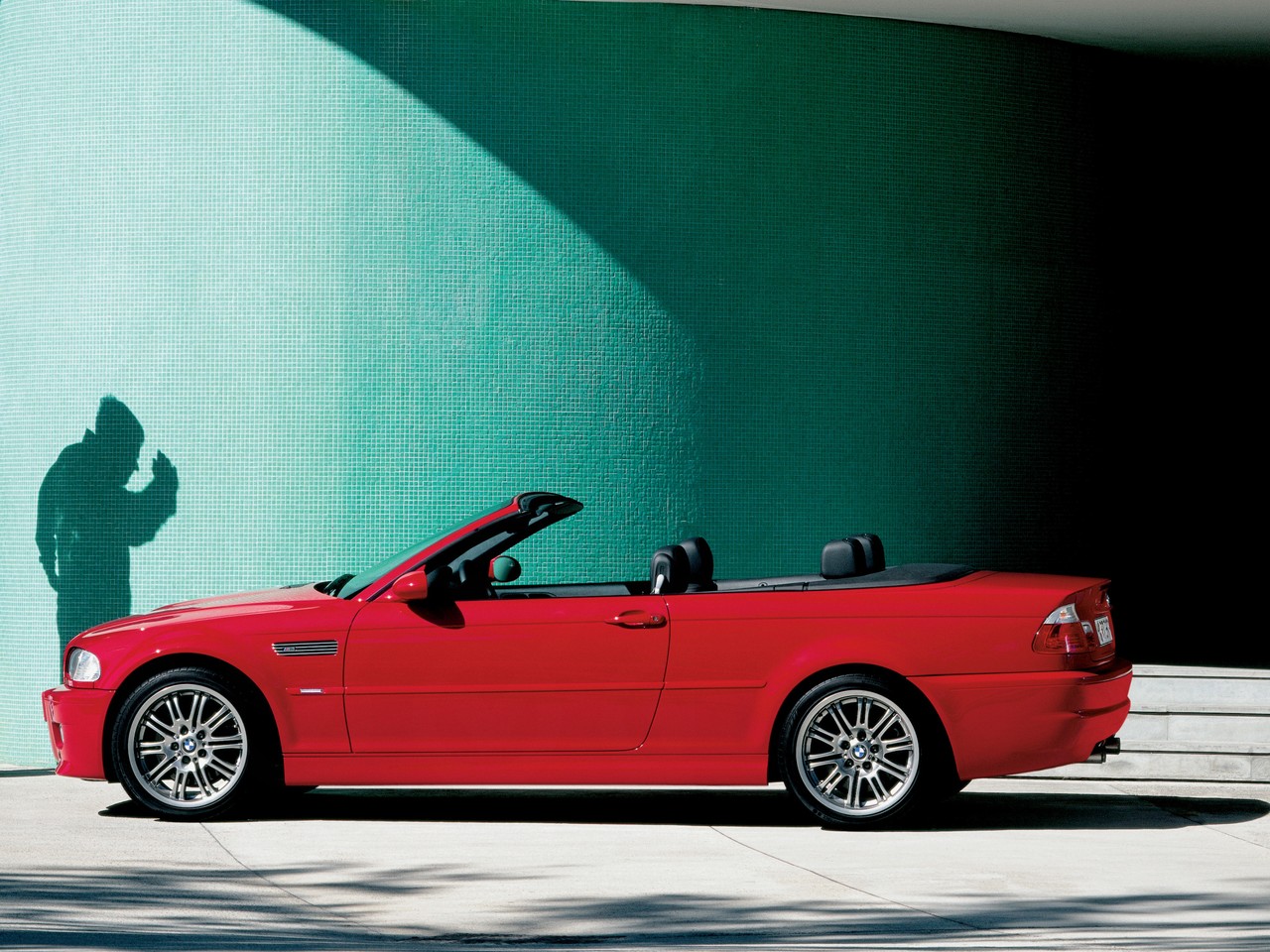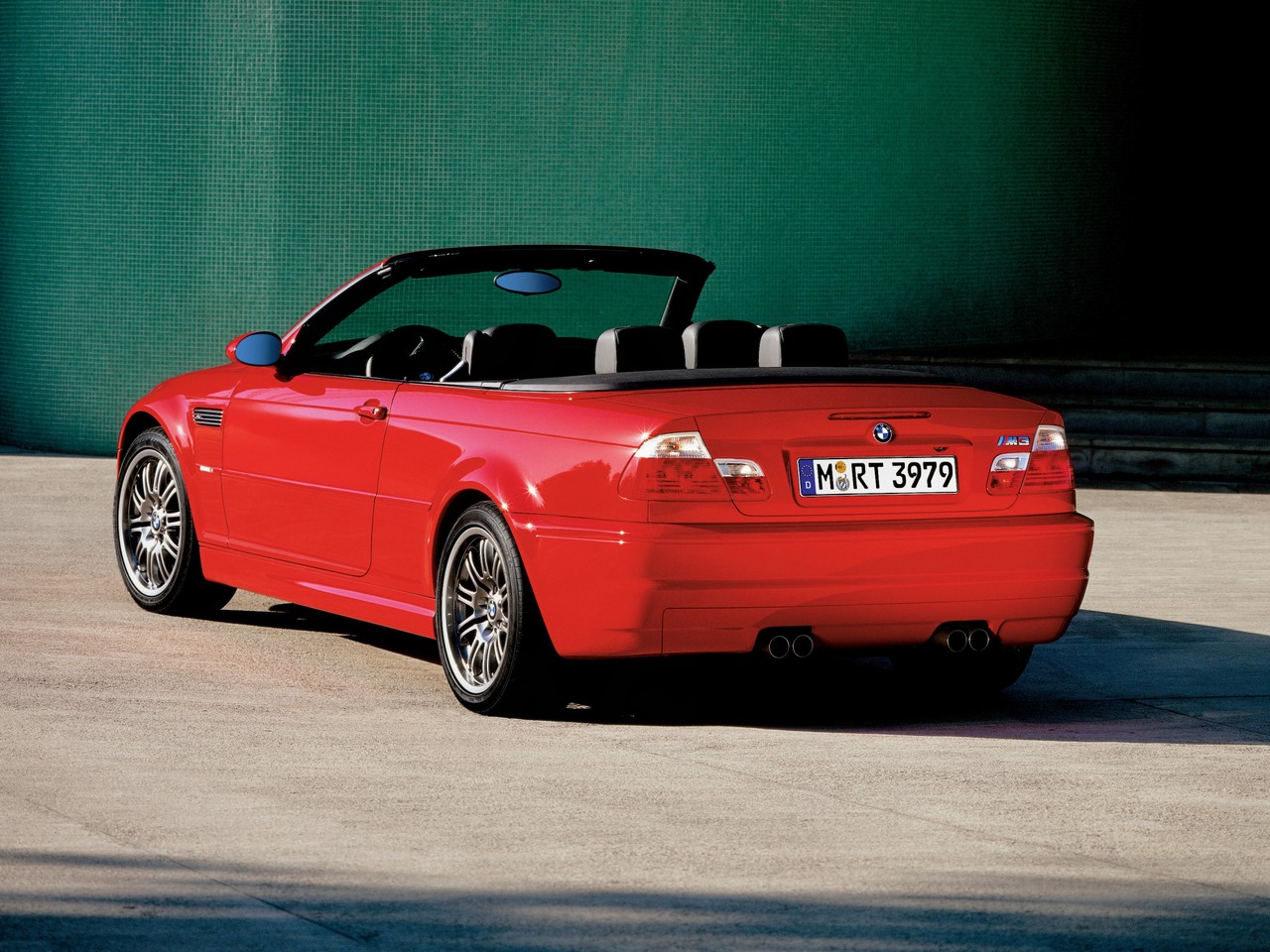
- Flexible six cylinder engine delivers throughout the rev range
- Impressive dynamics
- Accurate steering provides excellent feedback
- Open-top appeal
- SMG provides jerky gearshifts
- S54 engine susceptible to connecting rod bearing wear and VANOS failure
Overview
Officially released in Australia in May 2003, the BMW E46 M3 Convertible was a four-seat convertible with a power-operated soft-top roof. Manufactured in Regensburg, Germany, the rear-wheel drive E46 M3 Convertible was powered by BMW’s 3.2-litre S54B32 six cylinder petrol engine which was mated to either a six-speed manual or six-speed semi-automatic transmission (BMW’s Sequential Manual Gearbox, or ‘SMG’).
S54B32 engine
An evolution of the S50B32 engine , the 3246 cc S54B32 engine had a cast iron block, a forged steel crankshaft, a one-piece cast aluminium cylinder head, six individual throttle assemblies with electronic control, double overhead camshafts, variable intake and exhaust camshaft timing (BMW’s double VANOS), four valves per cylinder actuated by finger-type rocker arms, Siemens MSS 54 engine management, a compression ratio of 11.5:1 and a ‘scavening’ oil pump to maintain oil pressure when cornering.
The S54B32 engine had an 8000 rpm limit, though 80 per cent of peak torque was available from 2000 rpm. Furthermore, the E46 M3 Convertible could accelerate from rest to 100 km/h in 5.6 seconds.
Manual and SMG transmissions
The six-speed Getrag ‘Type D’ manual transmission had the following ratios: 4.227 (1st), 2.528 (2nd), 1.669 (3rd), 1.226 (4th), 1.000 (5th) and 0.828 (6th), with a 3.620:1 final drive ratio.
Developed in collaboration with Getrag and Sachs, the newly-developed SMG II transmission (with BMW’s ‘Drivelogic’ electronic control software) had the same gearset and ratios as the manual transmission, but used an electrohydraulic system to provide automatic operation of the clutch and engagement of each gear for gearshifts in as little as 0.08 seconds. The SMG II transmission enabled the driver to select from eleven (11) shift programs, six for the ‘sequential’ (i.e. driver-operated) mode and five in ‘automated’ (computer-controlled) mode. Furthermore, a Launch Control optimised shift times for maximum acceleration.
Dimensions and body
Compared to its E36 M3 Convertible predecessor, the E46 M3 Convertible was 19 mm longer (at 4492 mm), 70 mm wider (1780 mm), 30 mm taller (1370 mm) and had a 21 mm longer wheelbase (2731 mm). Relative to the E46 3-Series Convertible , the chassis for the M3 Convertible was strengthened by BMW M GmbH for greater rigidity, which contributed to a kerb weight of 1720 kg.
The M3 Convertible’s power-operated soft-top roof had a thermal lining and a heated, scratchproof glass rear window; a body-coloured hardtop roof was available as an extra-cost option. With the roof up, cargo capacity was 300 litres.
Suspension
Based on the E46 M3 Coupe , the E46 M3 Convertible had a single-joint spring strut front axle and a central-arm rear axle with a longitudinal control arm and a double track control arm; to reduce unsprung mass, the upper track control arm was made of aluminium.
Steering
The M3 Convertible had rack-and-pinion steering with engine-speed-sensitive variable power assistance, with an overall steering ratio of 15.4:1 (compared to 15.5:1 for the standard E46 3-Series). For the M3, power assistance was reduced for greater feel and steering return action was enhanced by the increased castor.
| Engine | Trans. | Peak power | Peak torque | |
|---|---|---|---|---|
| M3 | 3.2-litre petrol I6 (S54 B32) | 6sp man., 6sp SMG |
252 kW at 7900 rpm | 365 Nm at 4900 rpm |
Safety equipment
Standard safety equipment for the E46 M3 Convertible included dual front airbags, front and rear door-mounted side airbags, ABS, electronic brake force distribution, electronic stability control, cornering brake control, traction control and front seatbelts with pretensioners and load limiters. The M3 Convertible also had roll bars that were integrated in the rear headrests which would automatically deploy if a rollover was anticipated.
For the E46 M3 Convertible, the electronic stability control system (BMW’s ‘Dynamic Stability Control’, or DSC) was developed by Teves and could be switched off via a dash-mounted switch.
Brakes
The E46 M3 Convertible had 325 mm by 28 mm front brake discs with two-piece, cross-drilled discs and 327 mm by 20 mm vented rear discs.
Features: M3 Convertible
Standard features for the E46 M3 Convertible included 18-inch M Double Spoke II cast-alloy wheels, 18 x 8.0J front wheels with 225/45 ZR18 tyres and 18 x 9.0J rear wheels with 255/40 ZR18 tyres, a Hi Fi sound system with ten speakers and a six-disc CD changer, power adjustable ‘M’ front sports seats with combination Alcantara/Nappa leather trim, cruise control, bi-xenon headlights with washers, front fog lights, rear parking sensors, rain-sensing wipers, rear parking sensors (BMW’s ‘Park Distance Control’, an ‘M’ leather sports steering wheel, remote central locking, power windows, power mirrors, Anthracite head liner, sill plates with ‘M3’ logo, on-board monitor with TV, telephone preparation, an alarm and immobiliser.
From May 2004, however, the M3 Convertible was equipped with BMW’s ‘Professional’ satellite navigation system (previously available as an extra-cost option).
Variable M differential lock
The M3 Convertible’s Variable M Differential Lock consisted of a shear pump and multi-disc clutch. Any difference in the rotational speed of the rear wheels would drive a shear pump which, in turn, increased pressure in the viscous silicon fluid that would cause the multi-disc clutch to engage and transfer torque to the rear wheel with greater traction. The greater the speed difference between the two wheels, the faster the clutch would engage.
Related links
